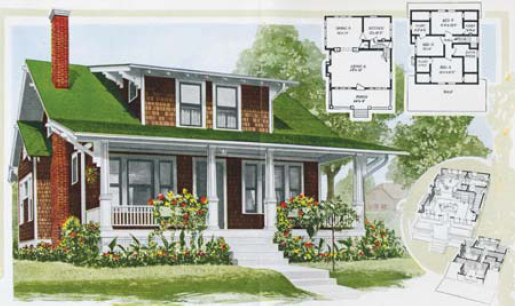
EIGHT COMPANIES that marketed their homes across the entire United States provided the bulk of mail-order housing. Most west coast homes came from Pacific Homes, Aladdin, Montgomery Ward, or Gordon-Van Tine. All companies except Pacific Homes supplied states in the east, south, and midwest. Aladdin and a Canadian company, Halliday Homes, supplied most of the mail-order homes in Canada.
The first of the large mail-order companies offering precut homes evolved in 1906, when a lawyer in Bay City, Michigan, saw the plans for a precut boat. William Sovereign realized that the precut system also would work for a building, and to test the idea he had a precut boathouse designed. The boathouse proved to be marketable, so William teamed up with his brother Otto, an advertising executive, to form the North American Construction Company. William provided the design and manufacturing expertise, while Otto managed the marketing.
Initially, the Sovereign brothers offered architecturally undistinguished homes of two to eight rooms, but they soon added a number of Arts and Crafts-style residences. They ordered the precut lumber locally from Lewis Manufacturing Company. To manage increased precut home sales, Lewis eventually needed to expand their production facilities and, in 1913, the company asked for partial ownership of the Sovereign brothers’ business. The Sovereigns refused this request, left Lewis, took their business to nearby International Mill and Timber, and renamed their company “Aladdin” after the mythical genie who built a castle overnight for his master. In retaliation, Lewis published its own 1913 catalog of precut homes, featuring many designs similar to those it had manufactured for Aladdin. In 1925, Lewis changed the name of their housing division to Liberty Homes and continued to produce precut buildings until 1975.
When, in 1915, International Mill and Timber demanded an interest in Aladdin Company, the Sovereigns took their business away, purchased the Eddy-Sheldon Mill in Bay City and resumed production, soon establishing additional facilities in Portland, Oregon; Hattiesburg, Mississippi; Wilmington, North Carolina; and Toronto, Ontario. Aladdin, which remained under the leadership of the Sovereign family, continued to market precut homes and other buildings until 1983.

Aladdin Company of Bay City, Michigan, the first to sell precut homes on a nationwide basis, offered the “Marsden” Arts and Crafts Bungalow.
International Mill and Timber, having lost Aladdin’s business, published its first precut house catalog in 1915 under the name Sterling Homes. By 1916, they boasted of mills and forests in Florida, Michigan, Texas, and Washington, as well as Canada. Sterling Company remained in business until 1974 and provided housing for many of the automobile makers in the Detroit area.
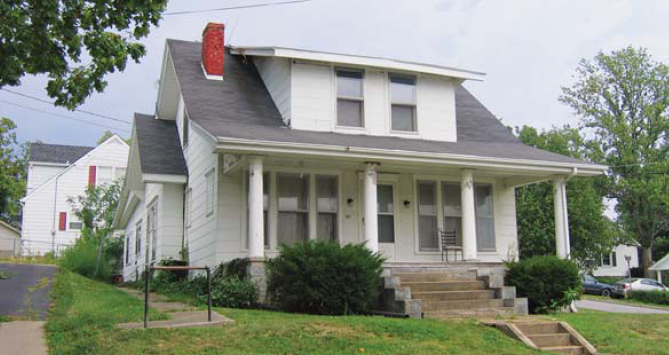
The “Marsden” as built in Springfield, Kentucky. (Photograph by Dale Wolicki)
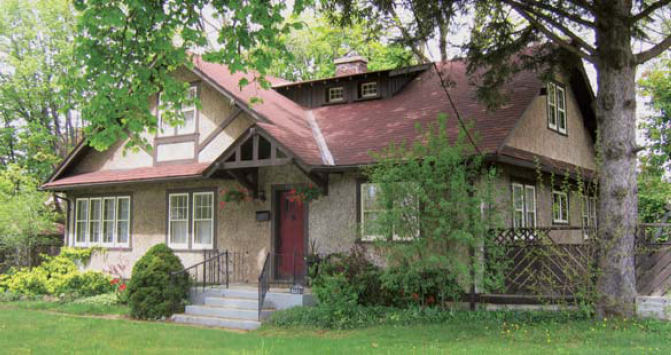
This Aladdin “Victoria” model from the Aladdin Canadian catalog was built in Cambridge, Ontario. (Photograph by Dale Wolicki)
A sawmill established in 1866 by U. N. Roberts in Davenport, Iowa, was the parent of Gordon-Van Tine Company, which incorporated in 1907 to handle building materials. The company name was derived from the middle names of two major stockholders, Horace Gordon Robinson and Harry Van Tine Scott. Gordon-Van Tine issued its first house plan book in 1909 and introduced its “Ready-Cut” home line in 1916. By 1923, the company had additional mills in Hattiesburg, Mississippi, and Chehalis, Washington. From 1917–31, Gordon-Van Tine produced the homes sold by Montgomery Ward. Gordon-Van Tine continued selling homes through 1947, when businessman Sidney Rose of Cincinnati bought the company, closed it, and sold the assets.
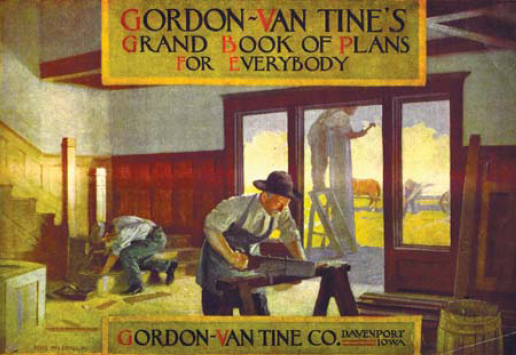
The front cover of Gordon-Van Tine Company’s 1909 catalog of house plans shows carpenters hard at work in what is obviously a farm setting, perhaps a subtle appeal to the rural market, which at that time included more than half the population of the United States.
In 1893, an architectural salvage company was incorporated in Chicago as the Chicago House Wrecking Company. Operated by four Harris brothers, Abraham, Frank, Samuel, and David, it secured contracts for the demolition of exhibitions such as the 1893 World’s Columbian Exhibition in Chicago and the 1904 St. Louis World’s Fair. In addition, the company sold new and salvaged building materials. By 1908, the company began offering house and barn plans to boost the sales of its millwork and lumber.
In 1913, the company name was changed to Harris Brothers. They published their first catalog of precut homes in 1916 and in 1923 opened a branch warehouse at St. Paul, Minnesota, to serve northern customers. According to memoirs written by Samuel Harris, Jr., a son of Samuel Harris, for twenty-five years the company drop-shipped all lumber sold by Sears, Roebuck. In the 1930s, to attract more repeat business, the company began marketing to contractors rather than to individual homeowners. Harris stopped selling homes around 1932.
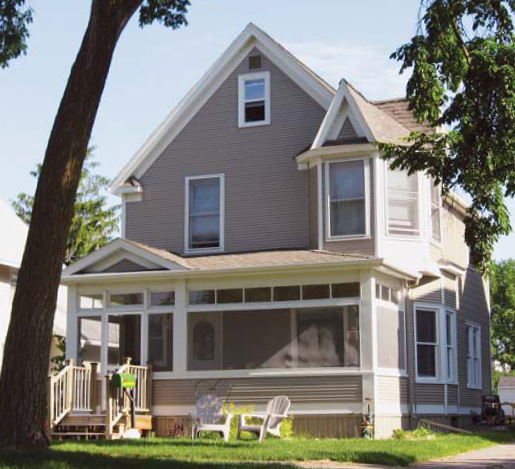
Harris Brothers claimed that model #6-A was their most popular home; it has been found from Illinois to Minnesota and from New York to Kentucky. This example is in Brainerd, Minnesota. The polygonal tower may appear to be an unusual architectural feature; however, both Sears and Wards offered models with similar towers.
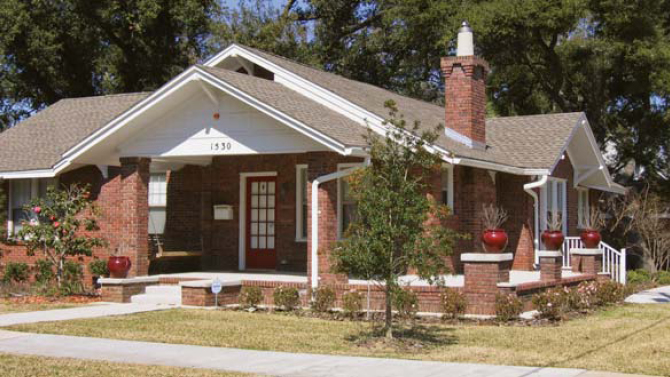
This Wards “Dresden” model, as built in Pensacola, Florida, is reversed from the original catalog image. This common alteration was done at no addtional charge. (Photograph by Dale Wolicki)
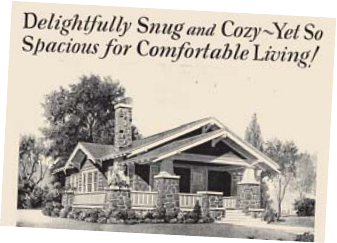
Montgomery Ward’s late 1920s catalogs featured many Arts and Crafts designs, such as the “Dresden.”
In 1934, the company reincorporated as Iron Street Lumber Company and remained in business until 1960, producing doors and windows for prefabricated house companies such as National Homes and Wausau Homes.
Montgomery Ward, headquartered in Chicago, introduced its house plan books in 1909, featuring turn-of-the-century designs. Montgomery Ward never owned or operated housing production facilities but subcontracted services from other companies. It appears that their early homes were manufactured in Bay City. Beginning in 1917, Gordon-Van Tine produced Montgomery Ward buildings. Precut homes were introduced in 1918 under the brand name “Wardway Homes.” Many of these homes are identical to Gordon-Van Tine models from corresponding years; only the model names and prices differ. Unpaid mortgages and decreased sales brought about the demise of Wardway Homes in 1931.
Incorporated in Los Angeles, California, in 1908 under the name Pacific Portable Construction Company, this company initially offered only sectional buildings. Precut homes were added from 1918–40 under the trade name “Pacific Ready Cut Homes.” Pacific Homes primarily marketed their buildings west of the Rocky Mountains, but their publications also boast of sales in Belgium, England, and France, as well as Alaska and Hawaii. In 1929, the company began building surfboards under the brand name “Waikiki Surfboards.” Pacific Homes ceased production of houses after 1940 but continued to produce surfboards until the end of World War II.
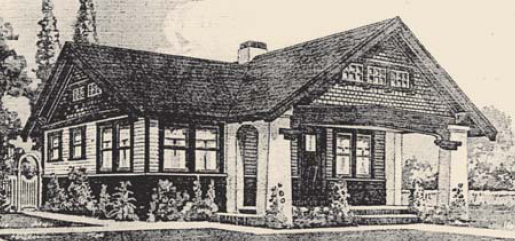
Models shown in the 1922 Crain Ready-Cut Homes catalog were a mixture of typical midwestern and California styles. Model M-209 combines elements of both.
Sears, Roebuck, the most well known of all American mail-order home companies, began offering house plans in 1908 in hopes of boosting building materials sales. In 1915, they offered as a trial five of the 109 plans in the Modern Homes plan book as precut kits. By 1917, most of their plans were available as precuts.
Between 1908 and 1940, Sears, Roebuck marketed more than 450 different models in their Modern Homes catalogs. In addition, a set of 1941 building plans titled “Sears, Roebuck Modern Homes” has been discovered; some of these were built by developers in Elyria, Ohio; Sidney, New York; and Cranford, North Plainfield, and Bergenfield, New Jersey.
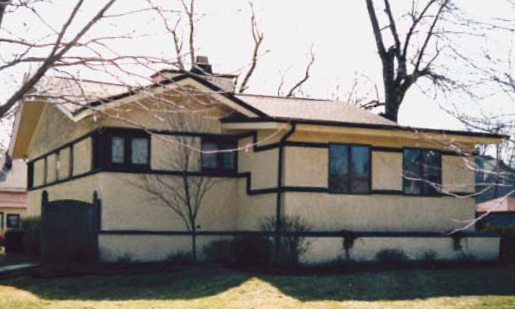
Frank Lloyd Wright designed twenty-four precut American System-Built homes. Twelve models were put into production in Milwaukee, Wisconsin. Apparently, only thirteen such structures were built, including this one in Berwyn, Illinois.
Some of the many small precut home companies with only local distribution include Crain (Houston, Texas), Bennett (North Tonawanda, New York), Bradley Portable House Company (Randolph, Massachusetts), and Harbing Company (Springfield, Nebraska).
Sears, Roebuck has been the most publicized mail-order home company since the 1986 book Houses By Mail. Its homes have been featured on television and in periodicals and newspapers. Four of its catalogs (1912, 1913, 1926, and 1932) are available as reprints. Of all the companies that once produced mail-order homes, only Sears, Roebuck is still in existence as of the date of this publication, although they no longer sell homes.
Perhaps, then, it is no wonder that many structures are mistakenly identified as “Sears” homes. This term has become generic, often used erroneously to refer to mail-order homes from every other company, plan book homes, prefabricated homes, homes with unusual provenance, and homes lived in by families whose name happens to be Sears.
This table details the largest mail-order home companies in the United States:
| Company | Years | Estimated* Number of Mail-Order Homes |
| Aladdin | 1906–83 | 100,000 |
| Sears, Roebuck | 1908–40 | 60,000–70,000 |
| Harris Brothers | 1908–31 | NA |
| Gordon-Van Tine | 1909–47 | 75,000 |
| Montgomery Ward | 1909–31 | 30,000 |
| Lewis | 1913–75 | 75,000 |
| Sterling | 1915–74 | 45,000 |
| Pacific Homes | 1918–40 | 37,000 |
* Data extrapolated from catalog figures and reports listing total annual sales
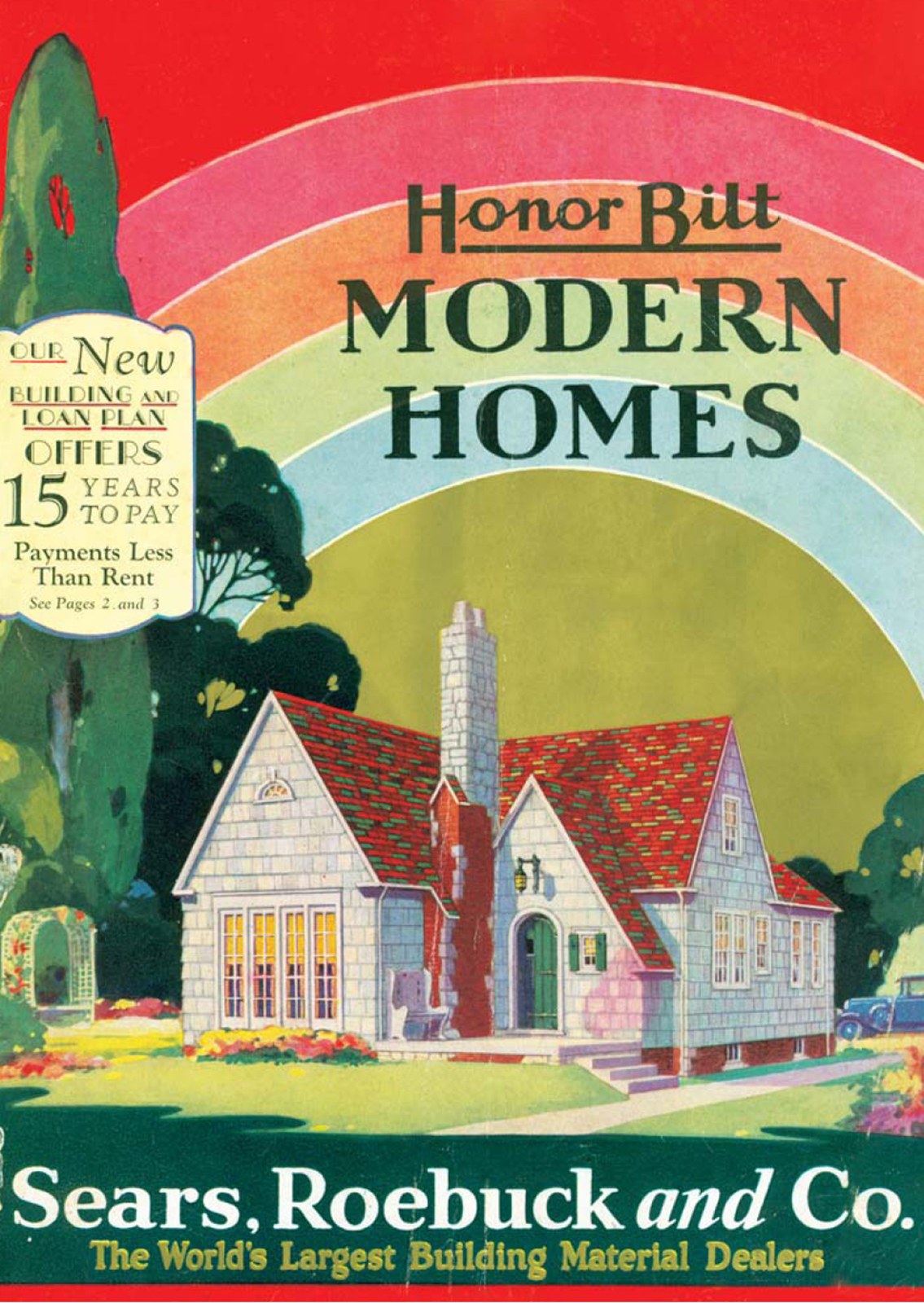
The cover of the 1929 Sears catalog features a Tudor Revival design, the “Mitchell.”